Discover 20 interesting facts about Istanbul – you surely haven’t heard about most of them and we guarantee you’ll find them surprising and entertaining!
The name Istanbul evokes immediately a rich imagery of opulent Oriental culture, architecture straight from the fairytales, exotic customs and the scent of spices. This melting point of the Western and Eastern culture has been for two thousand years one of the mightiest and wealthiest cities on Earth. Everything about it is fascinating, so let us share with you some fun facts about Istanbul – a truly unique city.
1. It’s older than you expect
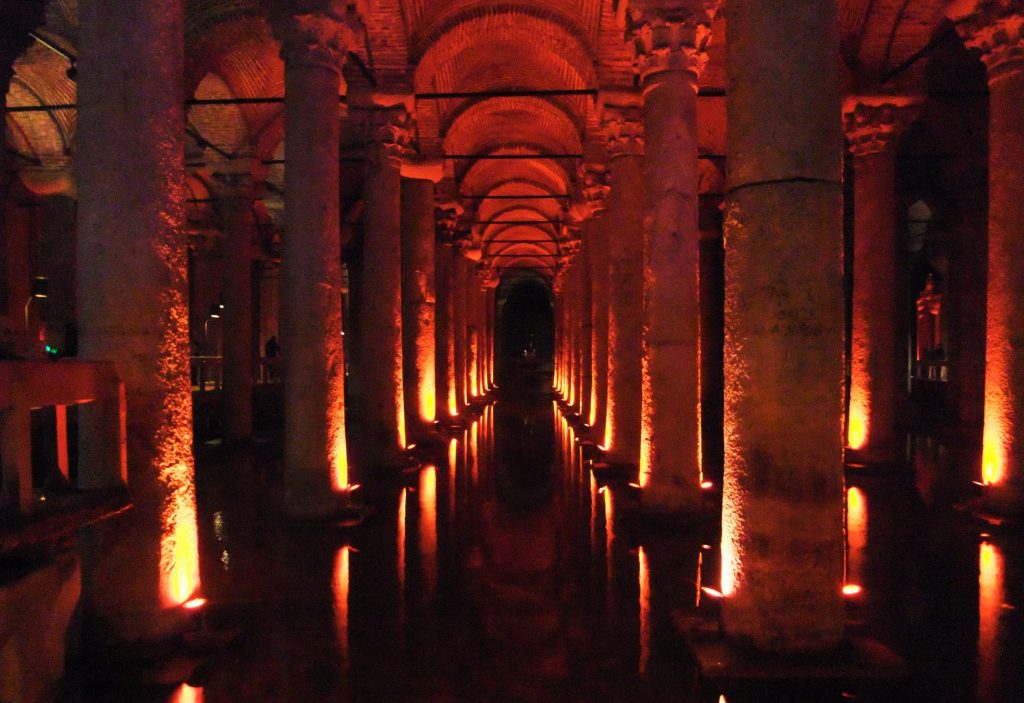
The ancient Basilica Cistern in Istanbul
Neolithic artifacts, discovered by archeologists in the recent years indicate that the area of Istanbul has been inhabited for over 8,000 years.
2. The capital of empires, but not of the country
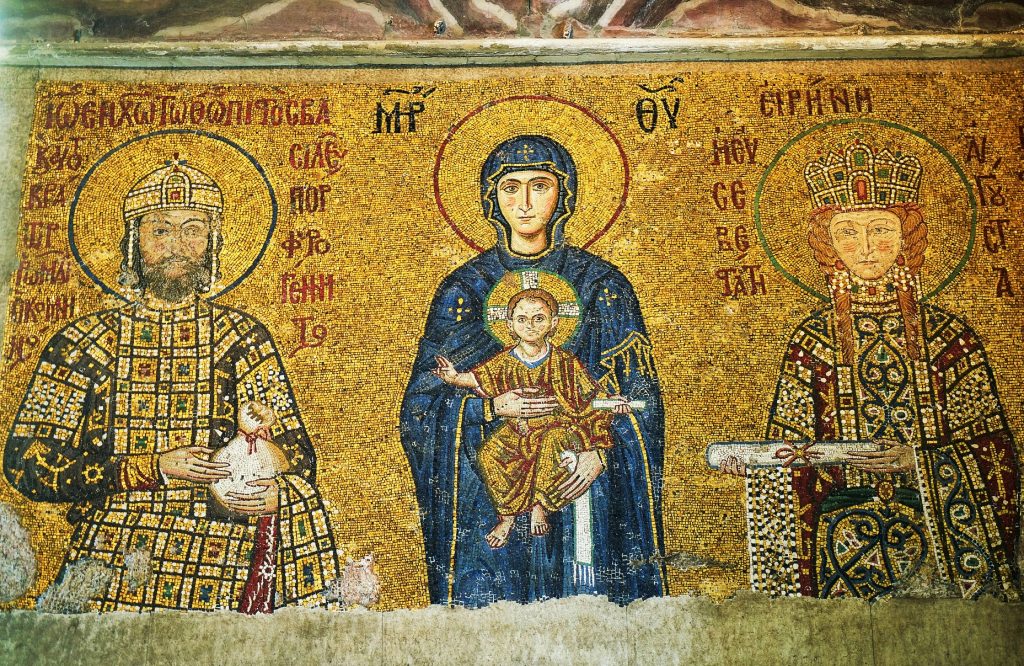
Byzantine mosaic in Hagia Sophia
Istanbul, under different names, was throughout centuries the capital of four great empires: Byzantine, Roman, Latin and Ottoman empire.
In the 20th century however, and more precisely in 1923 when Mustafa Kemal Atatürk proclaimed the Republic od Turkey, it lost its title to more centrally located Ankara.
3. One city, two continents
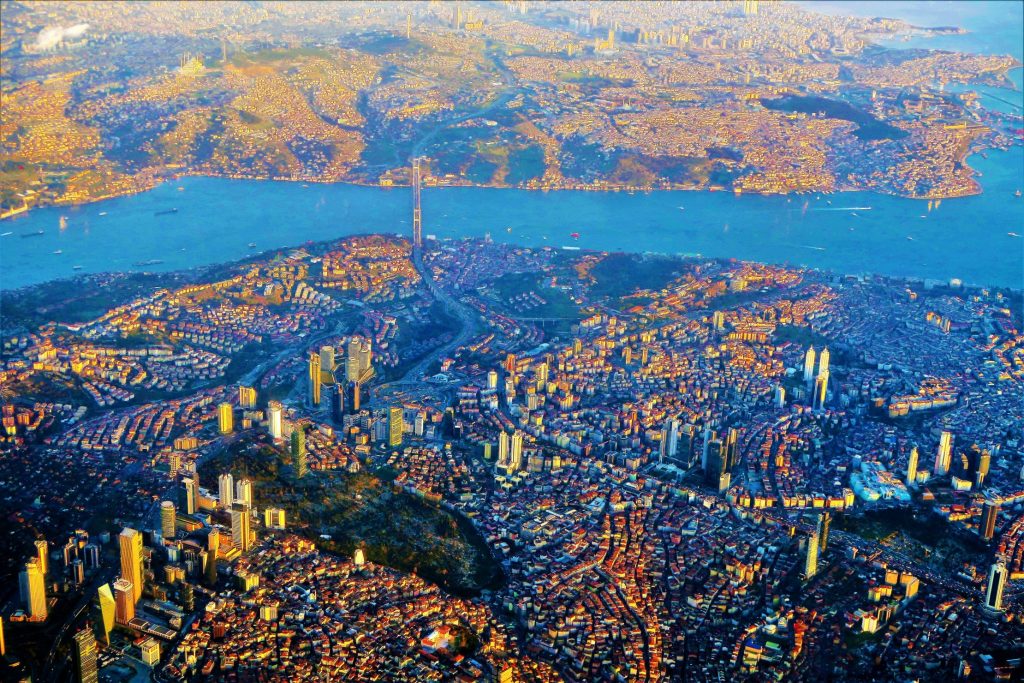
The view at the European and Asian part of Istanbul with the Bosphorus between them
Istanbul is the only city in the world that lies on two continents. The division between Europe and Asia is a natural one: the Bosphorus Strait passing between the Black Sea and the Sea of Marmara. The historic nucleus of the city is located on the European side.
4. City of many names

Stunning interiors of Hagia Sophia
Its first name was Byzantium (from the name of legendary king Byzas) gave to it in 660 BC by Megarean colonists. Subsequently, it was called Constantinople (“City of Constantine”) after the Roman Emperor Constantine the Great. The name Istanbul derives most probably from the medieval Greek expression “Is Tin Poli” meaning “In The City”. The city was officially renamed Istanbul instead of Constantinople in 1930.
A fun fact is that since many people still used the old name of the city, the Turkish post office stopped delivering any mail with the address “Constantinople” to force people to get used to the new name.
5. Seven hills
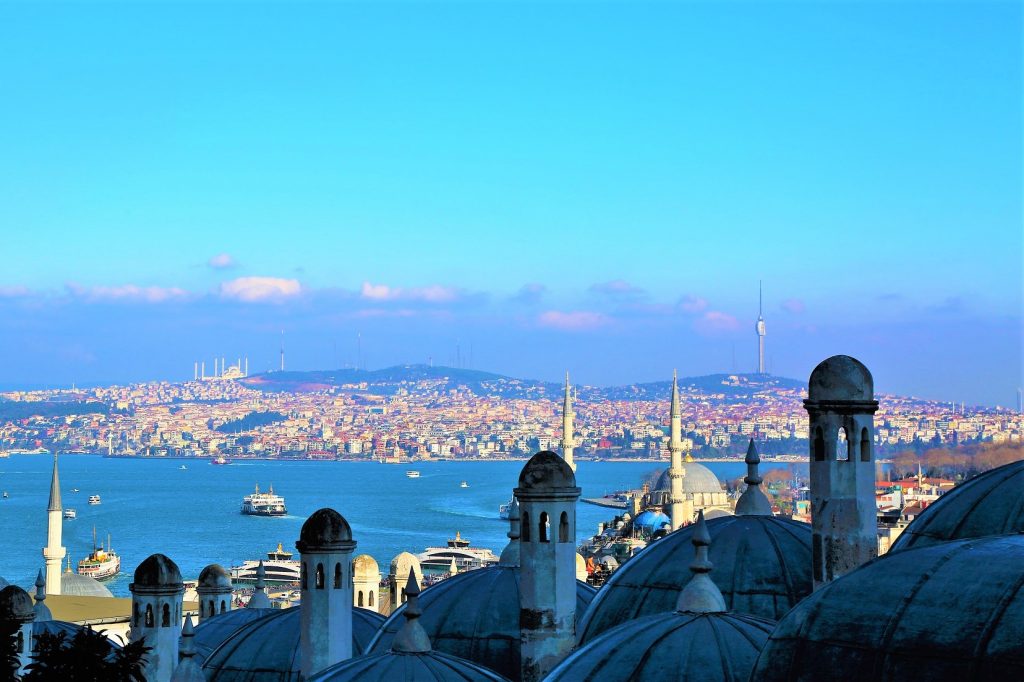
The hills of Istanbul and the mosques
Roman Emperor Constantine the Great built Constantinople on seven hills to make it match the famous seven hills of Rome. Interestingly, on each of the hills of Istanbul there are located imperial mosques.
6. Mosques at every corner
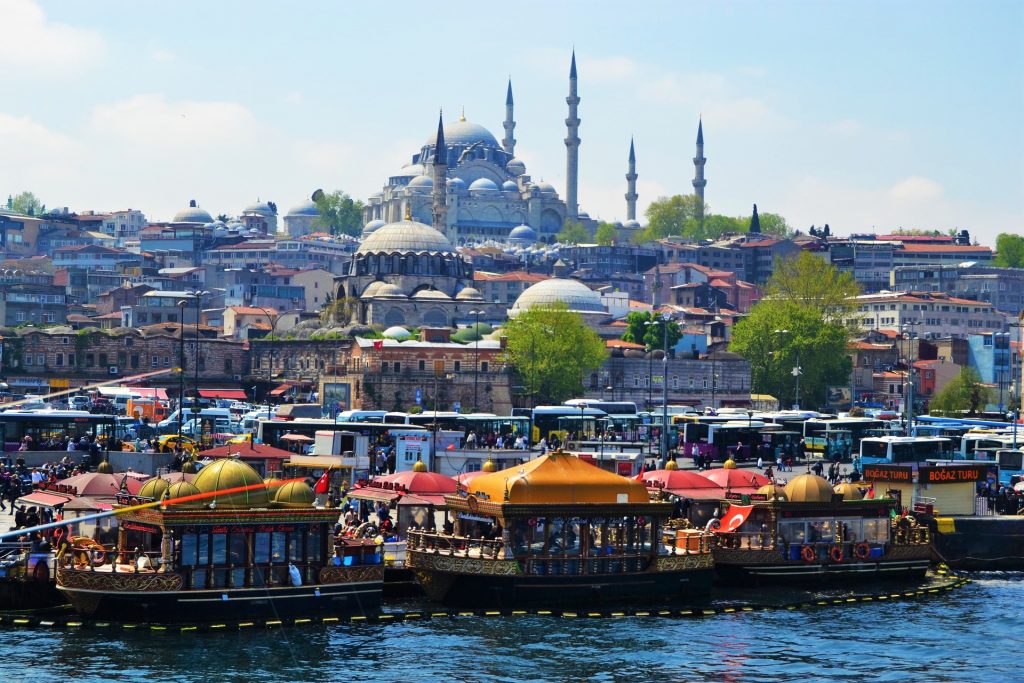
Dreamy cityscape of Istanbul
There are as many as 3,113 mosques in Istanbul – more than in any other city in Turkey.
The biggest one – the splendid Blue Mosque, an absolute must-see – is the only one in Istanbul with six minarets, the maximum number allowed.
7. The surprising history of Hagia Sophia

Mosaic of the Seraphim in Hagia Sophia
One of the most iconic sights of Istanbul – spectacular and enormous Hagia Sophia – was first a church, or more precisely – an Orthodox cathedral built in 537, and much later, in 1453, in the times of the Ottoman empire, it was converted into a mosque. It was the biggest church in the world for 9 centuries, until the Cathedral of Seville was built in 1520, taking the first place. Hagia Sophia collapsed and was rebuilt three times throughout its history.
Among the curiosities of Istanbul, we can surprise you with this one: In the 9th century, in the Byzantium era, two Vikings made a “graffiti” with their names in the Runic alphabet on the wall of Hagia Sophia. Their carved runes survived and you can still see them there. So, the vandal tradition of writing on the walls of famous places “I was here, John Smith 2019” is much older than you thought ;)
8. Religions of Istanbul

Turkish boys
Istanbul is a melting pot of different cultures – and consequently, several religions. Nowadays, officially 99% of the population of the city are Muslims, however, it wasn’t the case in quite recent past. In the Ottoman Empire era, there was a great diversity of religion and ethnicity in the city. For instance, according to 1914 census, as much as 35% of the population of Istanbul was of religions other than Islam: these were mostly Greek and Armenian Orthodox Christians and Jews.
As in every islamic country, five times a day you can hear throughout the city the calls for prayer from minarets and you can often observe people praying on the streets or in other public places.
9. Snow in Istanbul
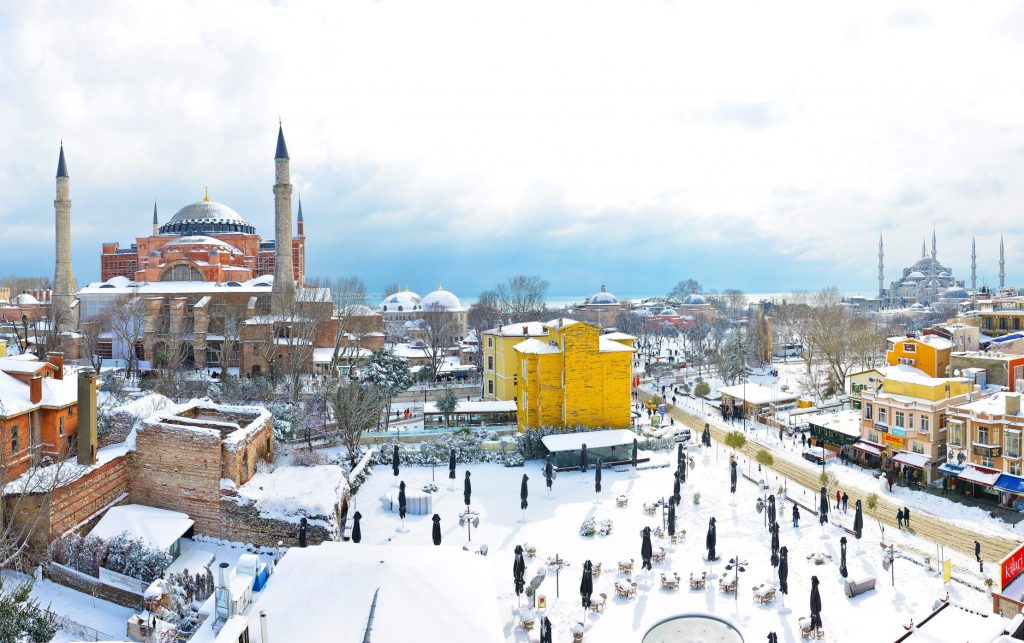
Istanbul under snow
One of the great curiosities about Istanbul is its weather! You might expect that a city located by the Sea of Marmara connected to the Aegean Sea, will have a mild weather throughout the year. Surprinsingly – especially for anyone who has visited it in the intense heat of the summer – it snows here in the winter! The temperature in some parts of Istanbul drops to -7 or -10 in the winter months.
10. Tulips in Istanbul
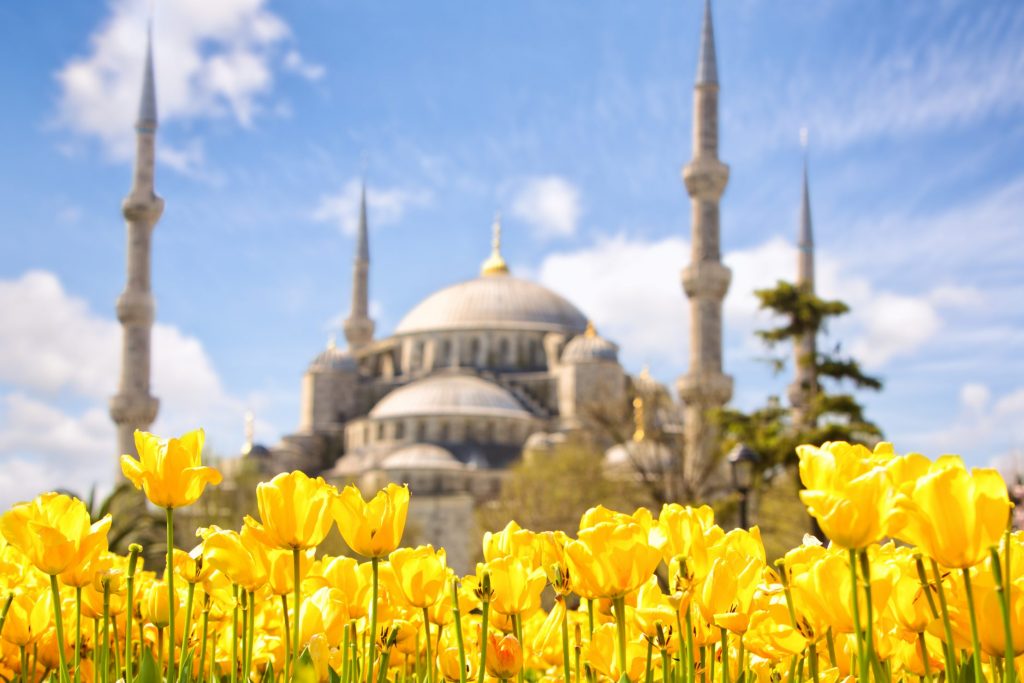
Tulip Festival in Istanbul – in front of the Blue Mosque
Tulips are a well-known symbol of the Netherlands, but their story originates in Turkey. In the times of the Ottoman Empire, the wild flowers from the Turkish mountains where brought to Constantinople, where they caught attention of the foreign diplomats. In 1554, tulip bulbs were sent over from Constantinople to Vienna and from there, they reached Amsterdam for the first time. The tulip trade with Constantinople flourished. The tulips quickly gained such a popularity in the Netherlands that they became an extremely precious product, leading to so-called Tulip Mania – the period in the Dutch Golden Age when it was possible to buy an entire village for a single tulip bulb of a rare species.
To celebrate its precious flower, Istanbul – just like Amsterdam – organizes yearly the Tulip Festival in April/May, with 30 million tulips blooming in the parks of the city.
11. Cats of Istanbul

Cats of Istanbul lead a pleasant life with great views
Cats are definitely the preferred pets in Turkish culture. You will see them all around you, not not only on the streets and squares, but also roaming the mosques and even in the cemeteries – sleeping between the tombs (or posing as a statue as on the photo above). They are clean, well fed and cared for and they always receive a lot of attention. Street cats usually sleep in wooden houses built for them at the expense of the State, and people in Istanbul feed and pamper the cats living in the streets, they even take them to the vet if needed. However, among very interesting facts of Istanbul we must note that with all that love for cats, Istanbulites don’t let cats into their homes. All the cats in Istanbul are stray.
There is a curious historical explanation for that – it all started in the Middle Ages with the Black Plague. Cats were dying of the plague the same as humans. However, they were very useful to kill rats – the main vectors of the plague. In the areas with numerous cats the chances of survival for inhabitants were higher, however, only if the sick cats were kept at a distance. As long as they stayed out of homes, they were useful. If they entered home, they would have caused death. That was a long time ago, but as often happens, the tradition survived even though the causes for forming it are long gone. Interesting, right?
12. Machines for feeding cats & dogs
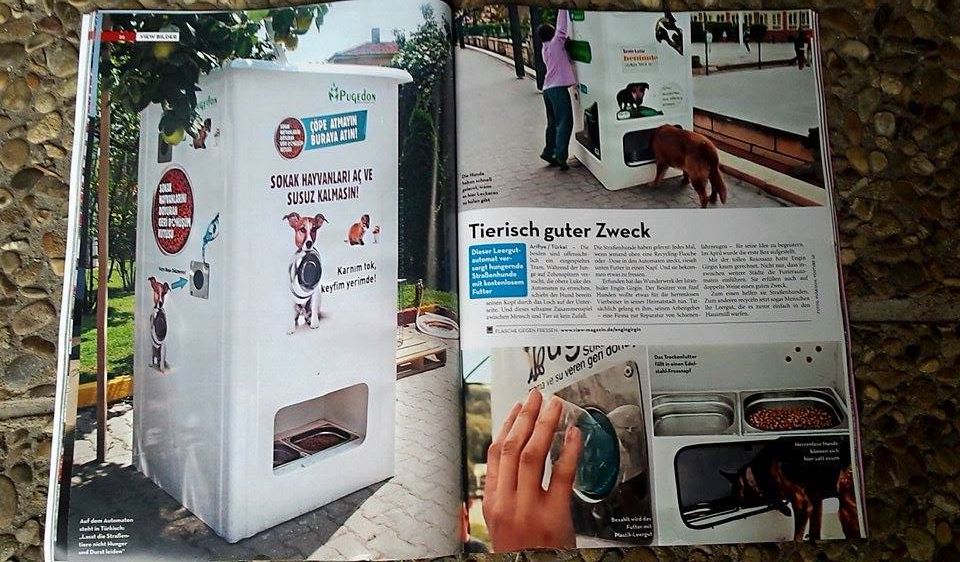
Pugedon pet food dispenser (press release from the official website of pugedon.com)
The Turkish company Pugedon has introduced in Istanbul a very modern, pet-friendly and eco-friendly idea. A recycling box releases water and food for stray dogs and cats, in exchange for plastic bottles. Such machines are located in numerous places throughout Istanbul, improving the quality of life of stray animals. There are over 150,000 stray dogs on the streets of this enourmous city, so it was a much needed – and genius – solution.
13. The aroma of nargile

Smoking Nargile in Istanbul
The Turkish water pipe called nargile or hookah has been traditionally the favourite local social activity, along with gathering for a tea. For centuries, it has never lost its popularity among the Istanbulites. It is so common, that in some places and restaurants in Istanbul the intense aroma of nargile constantly fills the air. If you haven’t tried it yet, it’s a perfect place to have that experience. It’s a way to relax, pampering your senses with one of many available flavours of nargile tobacco, like apple, peach or vanilla, accompanied by a tulip-shaped glass of Turkish tea.
14. Turkish coffee versus tea
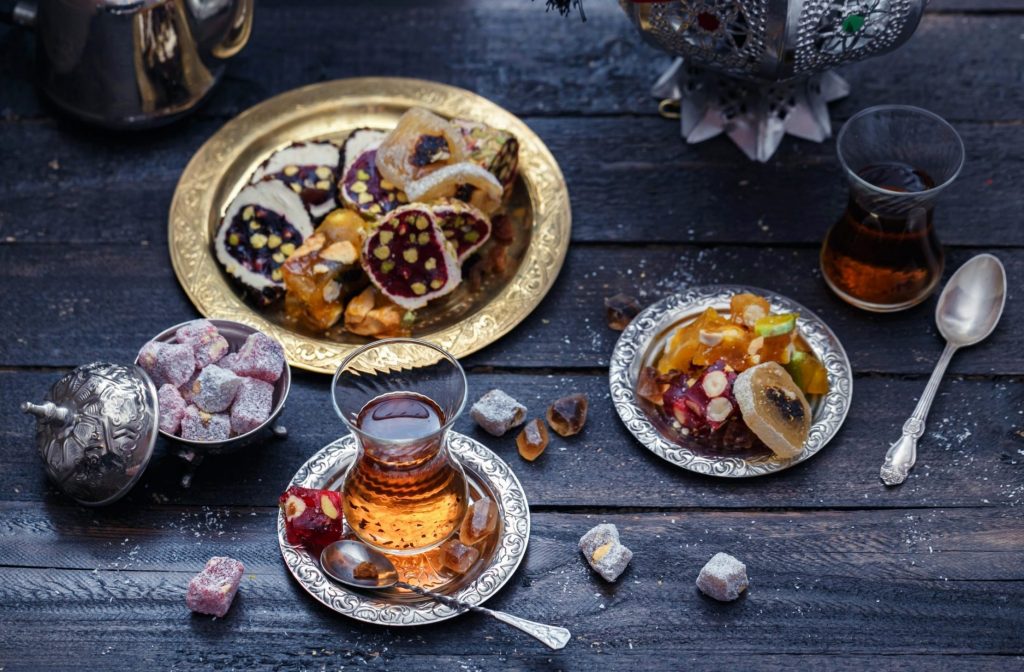
Turkish tea
Tea clearly has a strong tradition in Turkey, however, it has become such a popular drink only in relatively recent times. In the past few centuries, the real national drink has been Turkish coffee, brewed unfiltered in a particular way. However, coffee became expensive and due to the fact that tea bushes can be grown in the Black Sea region, while coffee plants can’t, tea won the competition. Nowadays both are popular, but you will notice that usually you are offered a glass of tea as a welcoming gesture.
Here is an unexpected fact about the Turkish coffee: Coffee first appeared in Turkey in the 17th century during the times of the Ottoman Empire. According to a severe interpretation of Quran, strong coffee was a stimulating drug, therefore drinking it was illegal and was punished with… a death sentence! The Sultan who imposed that rule was so obsessed with its observance that he used to disguise as a common Istanbulite, walk around the streets of the city armed with a sword, and if he caught anyone drinking the forbidden substance, he would chop his head off! Fortunately, this macabre law was lifted and by the end of the 17th century coffee become a national drink. Still in the same century, it was exported to the courts of Britain and France, where it gained a great popularity.
15. The biggest historical bazaar in the world

Inside the labyrinth of the Grand Bazaar of Istanbul
The Grand Bazaar is the oldest and largest covered market and one of the first shopping malls of the world. Built in 1456, it counts more than 4,000 stores distributed along 64 covered streets, and among them two mosques, four fountains, restaurants, cafes and 22 old gates!
For centuries, it was one of the most important trade hubs in the world. It used to be organized with each street selling only one type of goods – and the street’s name reflected the nature of the trade. This division disappeared gradually, but there are still some of such specialized streets nowadays. For instance, there is a street of jewellers, a street of carpets, a street of leather goods etc.
One of the interesting facts about Istanbul is that according to Travel&Leisure magazine, the Grand Bazaar was No.1 most-visited tourist attraction in the world – with over 91 MILLION visitors per year! It means between 250 thousand and 400 thousand visitors every day. Amazing, isn’t it?!
Read all about the Grand Bazaar and typical Turkish products worth buying in our Guide to Shopping in Istanbul
16. Hundreds of hammams
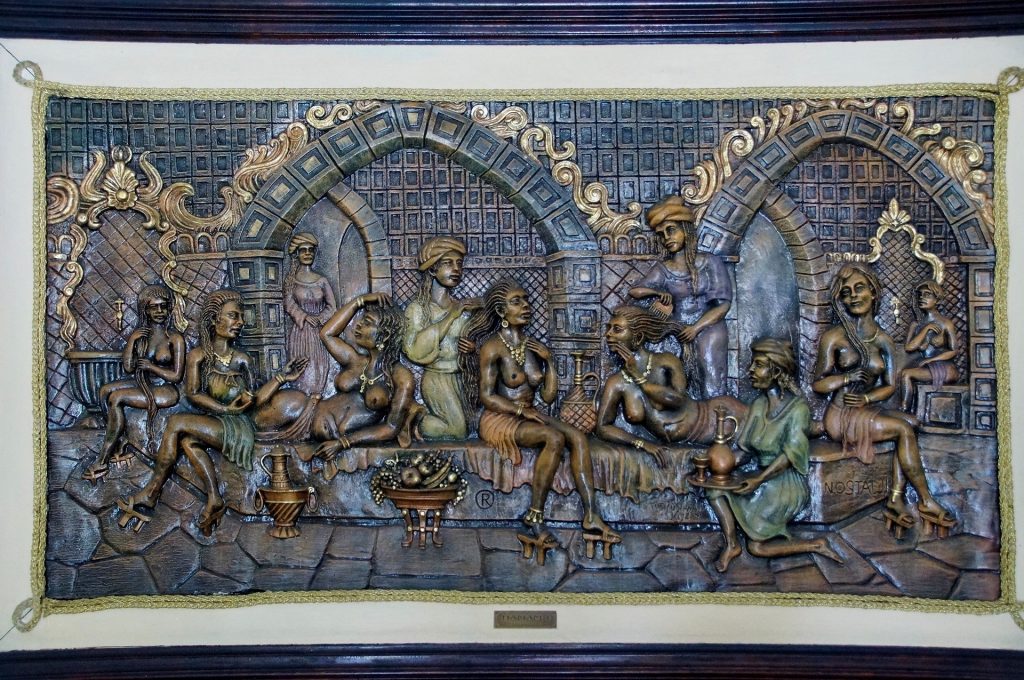
Relief depicting a hammam in Istanbul
Hammams – the Turkish baths – have become a spa standard worldwide, but it’s an entirely different story to be in the original Turkish one. An interesting fact about Istanbul is that there exist incredibly many – and to be precise – 237 hammams in the city! Nowadays, only 60 hammams are still active – and they are still popular among the Istanbulites. The other ones are used for different purposes, like museums or exhibition centres or shops, or disused completely, in the state of ruins. The oldest and biggest Turkish bath in Istanbul is the Tahtakale Hamami built in 15th century, unfortunately nowadays used only for storage.
17. Car-free islands
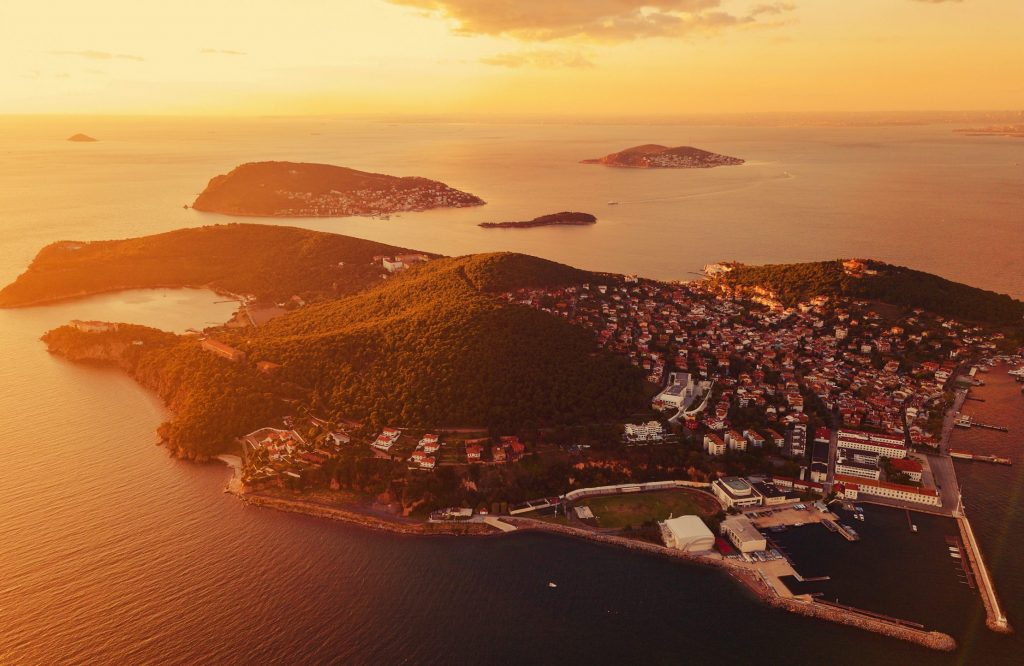
Archipelago of Prince Islands in Istanbul
One of the curiosities about Istanbul is that this city, although located by two seas, doesn’t have beaches anywhere close to the centre. The place to go to enjoy pleasant beaches are the Princes’ Islands. It’s an archipelago of 9 islands at the Marmara Sea, reachable by a nice boat trip or ferry through Bosphorus. The real surprise though is the fact that all motor vehicles are banned on the islands! You can enjoy sounds of nature and move around in a charmingly old-fashioned horse cart – and the coachmen drive like crazy! Quite an unforgettable experience ;)
18. The third oldest metro in the world
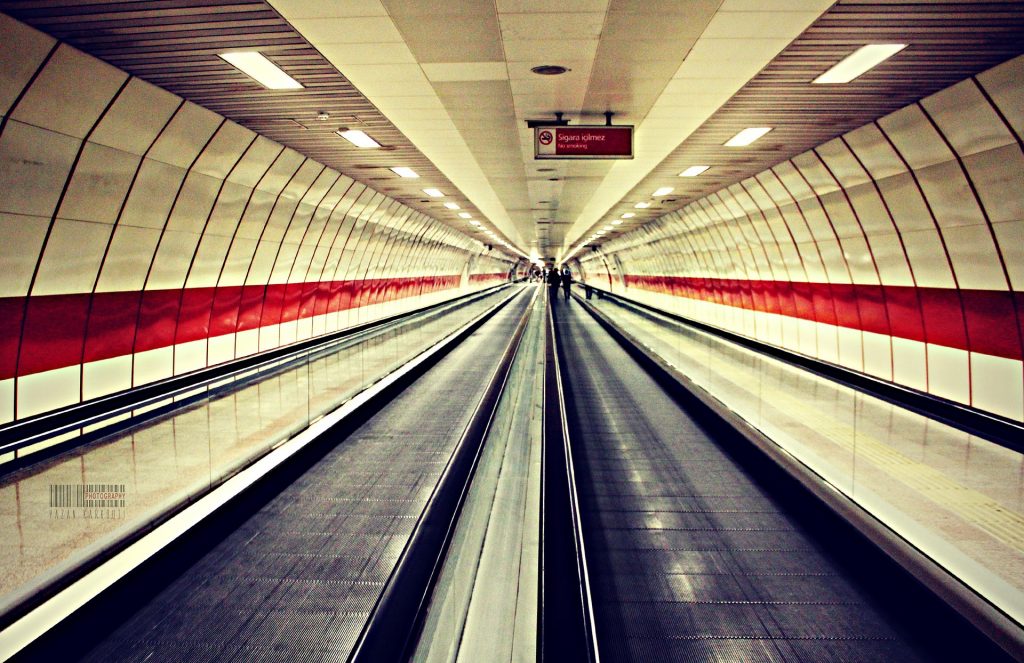
Metro in Istanbul
You may be surprised to discover that the metro of Istanbul is the third oldest one in the world! The first one in history was the famous London tube built in 1863, followed by New York subway in 1868 – and followed, only 7 years later, by Istanbul metro in 1875. Don’t believe the websites that say it’s only 0.5 km long, obviously it’s not true! That was just the beginning. It’s 115.3 km long and keeps on growing, as it’s clearly needed in such an enormous city with great distances… between the continents :)
19. The most crowded city
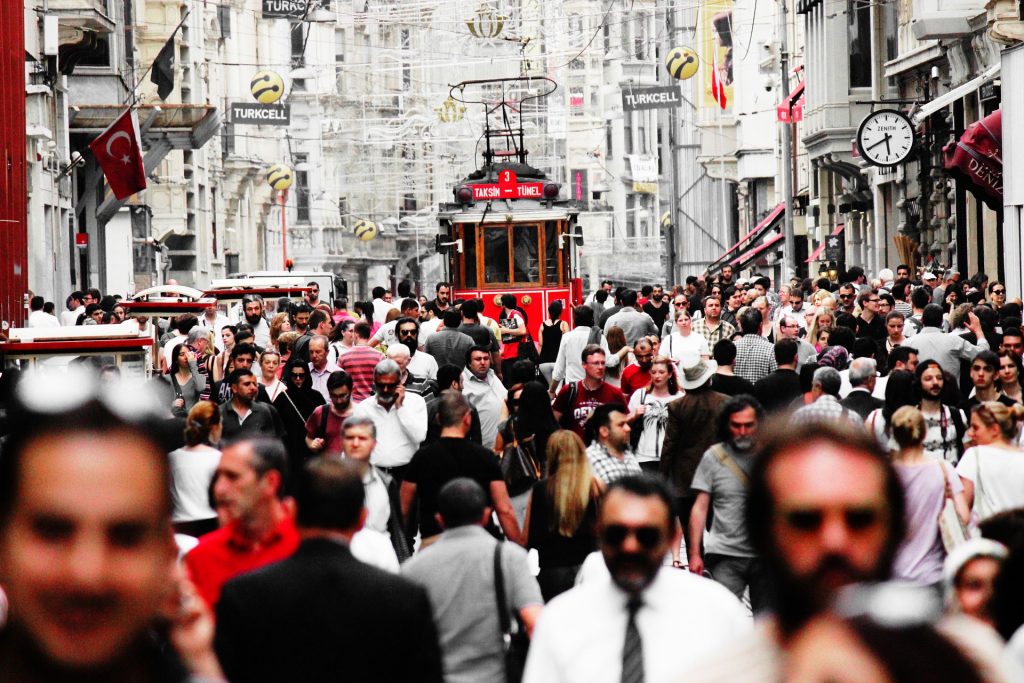
Crowds on the streets of Istanbul can be overwhelming!
For most of its long history, Istanbul was one of the world’s largest cities. In the 5th century it was competing with Rome as the most populated city in the world and held its postion until the 12th century. From the 16th century until 1750, it was the biggest city of Europe, until London took the title.
Nowadays, Istanbul has a population of incredible 15 million! Roughly two thirds of the inhabitants of the city live in Europe, and about one third (35%) in its Asian part.
20. Global city
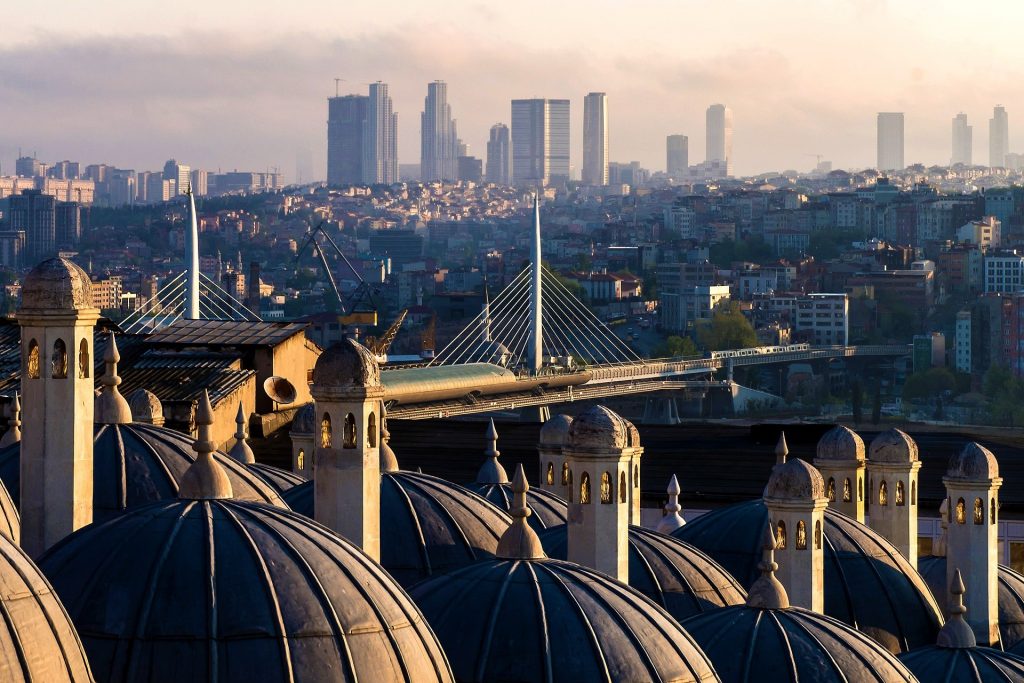
Ancient and modern Istanbul
Istanbul is not the capital city, but it has always been and still is the historical, cultural and economic heart of Turkey. It’s the largest Turkish city with the highest population and it accounts for more than a quarter of GDP of the entire country. According to the Brookings Institution’s report, Istanbul was the 7th fastest-growing metropolitan economy in the world.
The city is also one of the world’s fastest-growing tourism destinations – according to MasterCard report, it is among the top ten tourist destinations worldwide. So, if you haven’t been there yet – it’s time to go :)
Read about 12 Reasons to Visit Istanbul
Other interesting facts about Istanbul
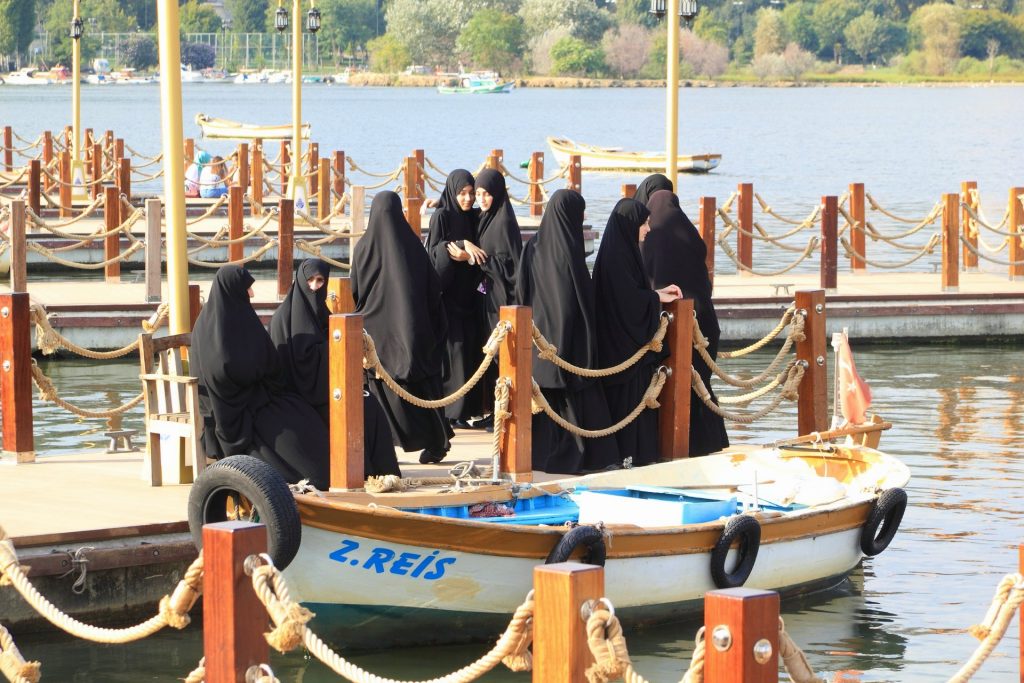
Turkish women in traditional muslim clothes
Most Turks don’t speak English, but it doesn’t discourage them to be sociable and talk in Turkish to strangers, undisturbed by the fact that there is no dialogue – it is quite an exotic experience :) The ones who speak English may be very insistent in practicing their language skills with foreigners – they don’t take “no” for an answer :) Female travellers unaccompanied by men can be observed very blatantly and followed on the streets by men who just keep on looking at them, without even trying to talk. Sometimes the cultural differences may be overwhelming, but for most of the time Turks in Istanbul are friendly people, living their daily life in a truly multicultural environment.
Check the hotel deals in Istanbul updated daily.
There are many more curiosities about Istanbul, this city really has a great wealth of stories to tell. If you want to share other ones, write them in a comment!
3 thoughts on “Interesting Facts about Istanbul – 20 Curiosities”
Leave a Reply
More Travels in Europe

Interesting Facts about Venice – Curiosities & Mysteries
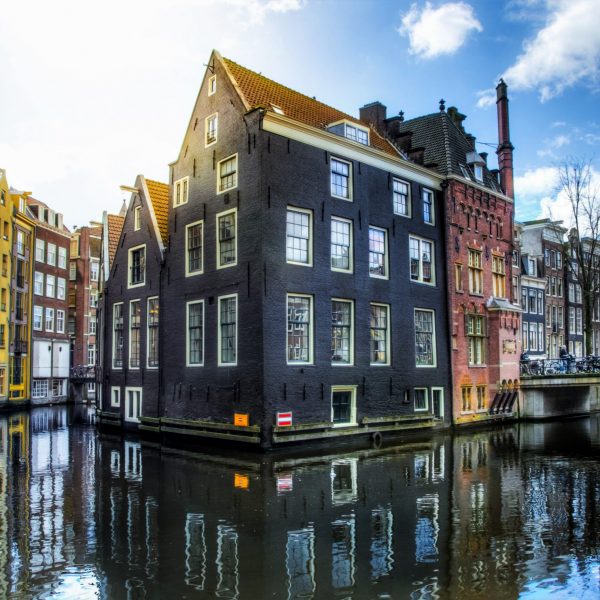
Interesting Facts about Amsterdam – 10 Amazing Things You Didn’t Know
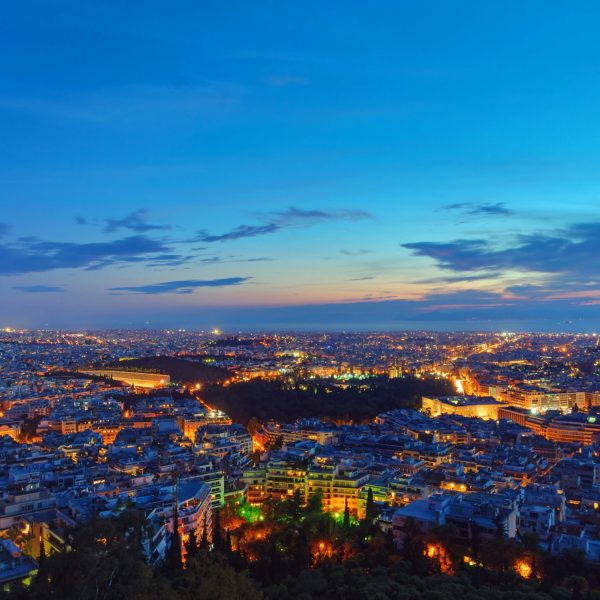
Nightlife in Athens – Best Clubs, Bars and Party Areas
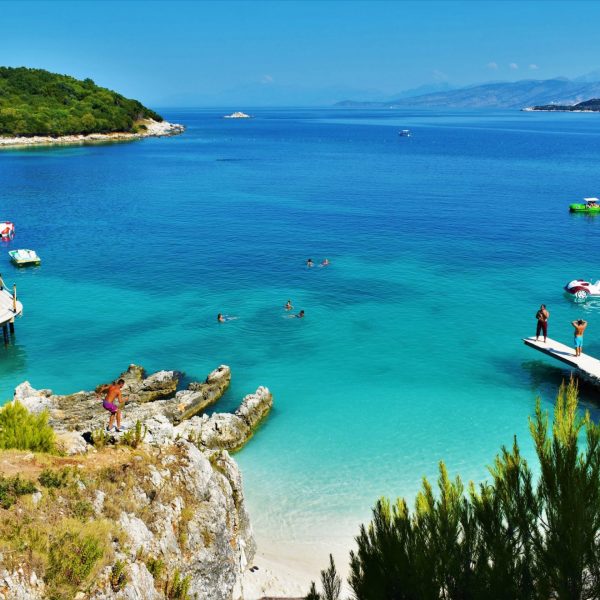
What to See in Albania – The Best Places To Visit
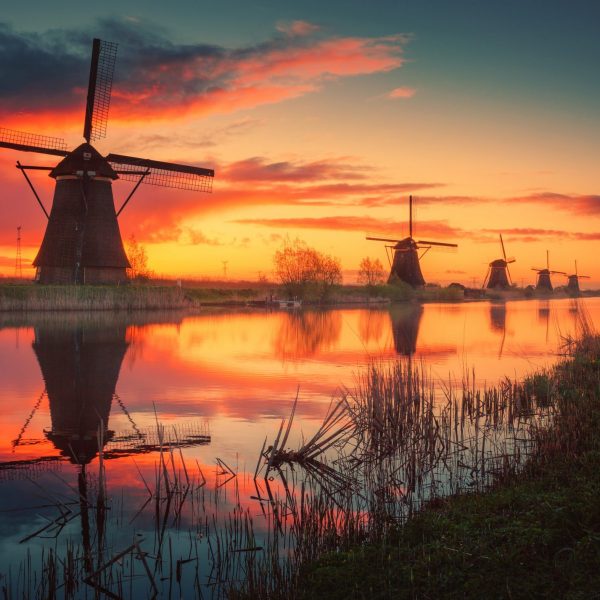
15 Best Places to Visit in The Netherlands
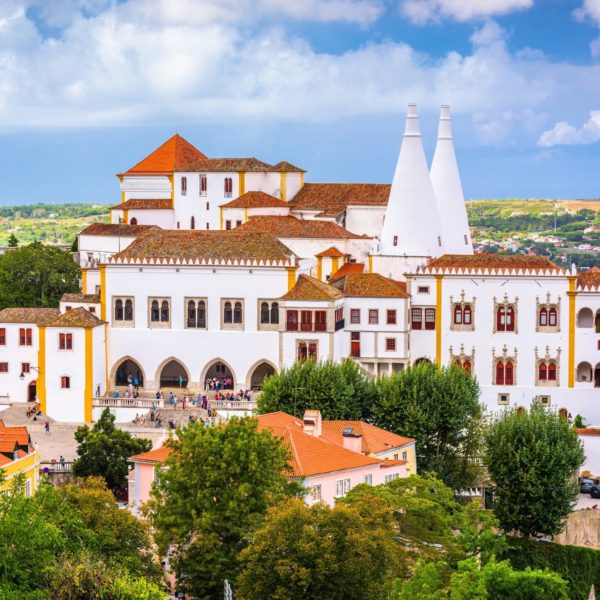

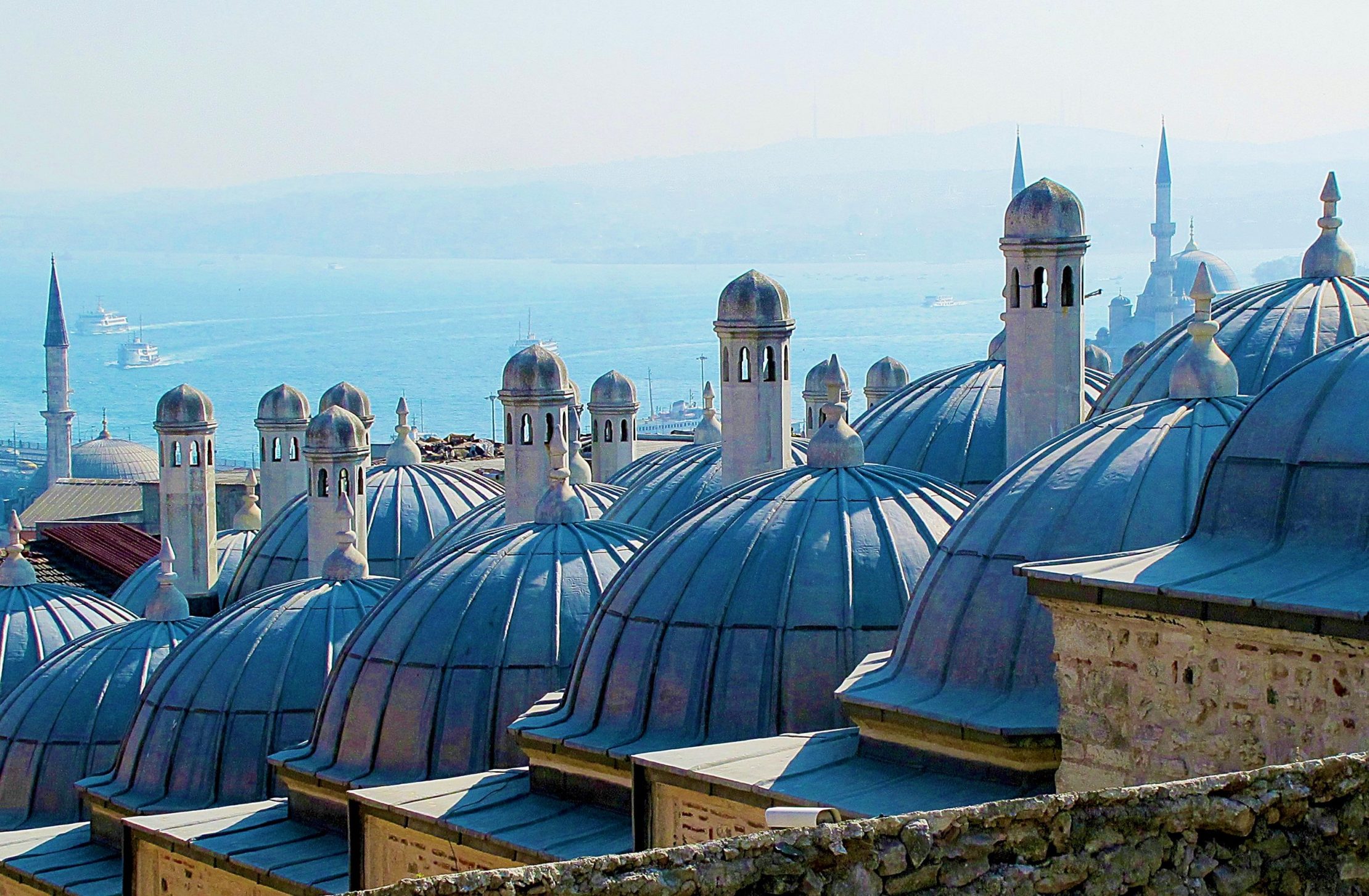


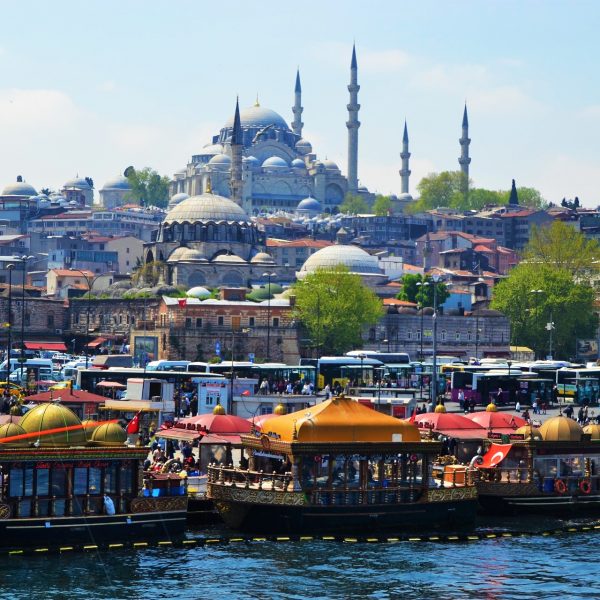

It’s so interesting! I never expected snow in Istanbul! Also the part about Vikings was so funny :D Great post, thanks!
Hi Sarah, thanks for the feedback :) I also find it fascinating to see Istanbul covered with snow! It looks so unreal, right? :) And about the Vikings – I saw also such a Runic graffiti in Scotland at the entrance of a prehistoric tomb in Maeshowe, also in the tone “I was here, Name” :)
Your content is excellent. Good blog!